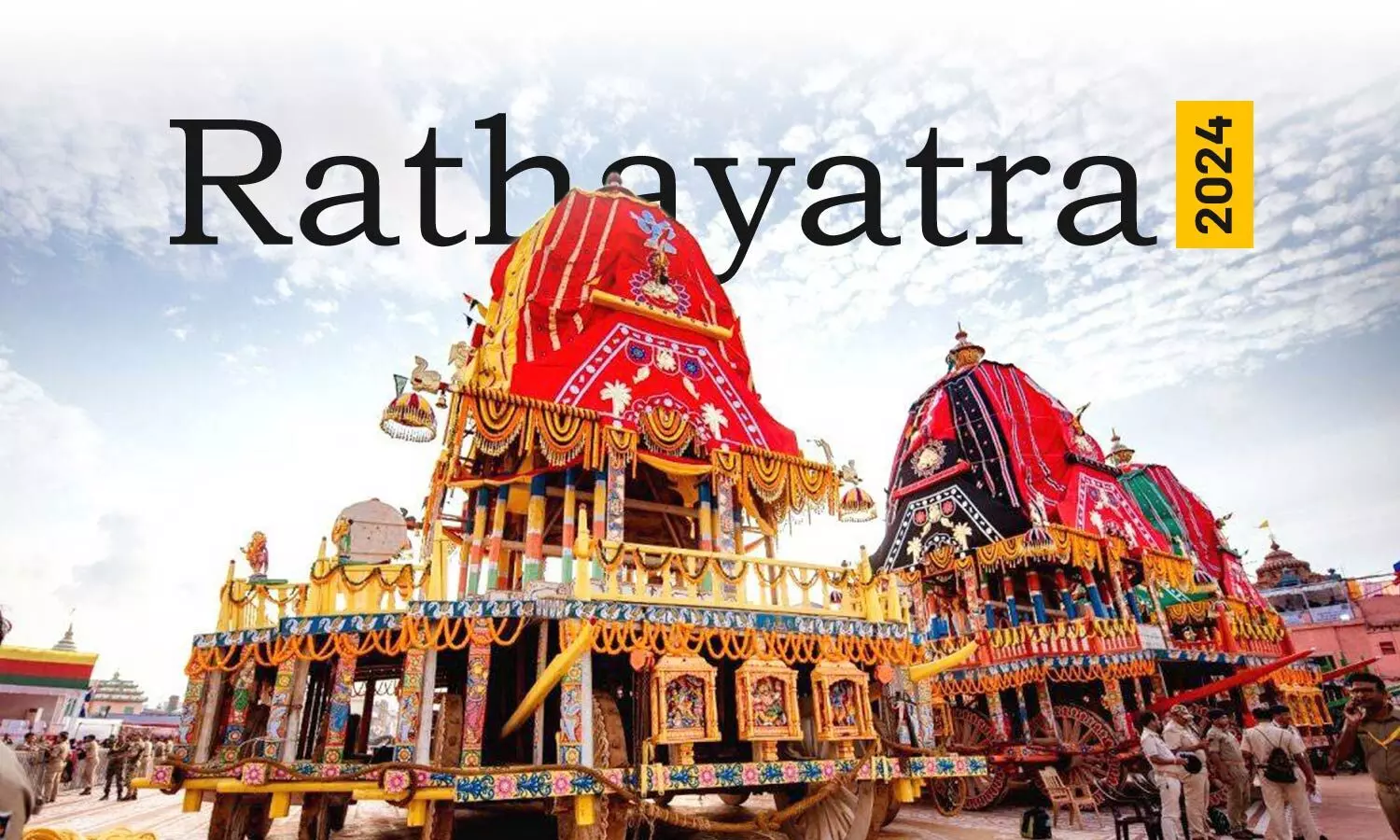Jagannath Rath Yatra 2024 Date, History, Significance, Celebration
Learn about Rathayatra, a vibrant Hindu festival where deities are paraded on ornate chariots. It symbolises inclusivity and spiritual devotion across diverse regions.
image for illustrative purpose

Rathayatra is one of the most vibrant and visually spectacular festivals in Hindu culture. Celebrated in various regions of India and Nepal, this festival involves taking an image of a deity in a grand procession, or yatra, through the streets on a chariot, known as a ratha. This unique celebration provides an opportunity for worshippers to have darshan, an auspicious viewing of the deity, especially for those who might not be allowed into the inner sanctums of temples due to caste or sectarian restrictions.
Historical and Religious Significance
The festival of Rathayatra holds deep religious significance in Hinduism. It embodies the belief that the divine power associated with a deity's image is not confined to the temple but extends beyond its walls. This conviction is dramatically demonstrated as the deities are paraded through the streets, blessing the onlookers and spreading their divine presence far and wide.
One of the most famous Rathayatra festivals is dedicated to Lord Krishna, worshipped as Jagannatha, and takes place in Puri, Odisha. This event is renowned for its grandeur and attracts millions of devotees from around the world. Another significant celebration occurs in Shrirampur, West Bengal, and similar festivals for various deities are observed across India and Nepal.
The Magnificent Chariots
The chariots used in Rathayatra are often elaborately carved and decorated, reflecting the artistic and cultural heritage of the region. The chariots of major deities are usually immense and heavy, sometimes requiring hundreds of devotees to pull them through the streets. These massive structures are crafted with intricate designs and vibrant colors, making them a focal point of the festival.
In contrast, in villages, deities may be carried on a simpler, lighter palanquins. Regardless of the size and complexity of the chariot, the essence of the festival remains the same: to bring the deity out into the public, allowing all devotees to witness and receive blessings.
The Festival in Puri
The Rathayatra in Puri is arguably the most celebrated and grandest of all such festivals. Dedicated to Lord Jagannatha, a form of Krishna, this event is marked by three colossal chariots carrying the deities Jagannatha, Balabhadra, and Subhadra. These chariots are constructed anew every year from wood sourced from specific trees deemed sacred.
The festival begins with the ceremonial installation of the deities on their respective chariots. Amidst the chanting of hymns and the beating of drums, the chariots are pulled by thousands of devotees along the Bada Danda, the grand avenue leading to the Gundicha Temple. This journey is symbolic of the deities visiting their aunt’s temple and staying there for nine days before returning to the Jagannatha Temple.
Celebrations in Other Regions
While the Rathayatra in Puri is the most renowned, similar festivals are celebrated with equal fervour in other parts of India and Nepal. Each region has its unique customs and traditions associated with the festival. In West Bengal, the Rathayatra of Shrirampur is a significant event, attracting large crowds and showcasing elaborate chariots.
In Gujarat, the Rathayatra of Ahmedabad is another major celebration, where the idols of Lord Jagannatha, Balabhadra, and Subhadra are taken out in a grand procession. The streets are lined with devotees singing bhajans and offering prayers, creating a spiritually charged atmosphere.
In South India, the Rathayatra of the deity Ranganatha in Srirangam is a major event, marked by the grandeur of the chariots and the enthusiasm of the devotees. Each of these regional celebrations adds to the rich tapestry of Hindu culture, showcasing the diversity and unity of the faith.
The Role of Devotees
Devotees play a crucial role in the Rathayatra festival. The act of pulling the chariot is considered highly auspicious, and thousands of worshippers vie for the honour. This collective effort symbolises the unity and devotion of the community. The chariot-pulling is accompanied by the singing of devotional songs, dancing, and the playing of traditional musical instruments, creating an atmosphere of joy and reverence.
For many devotees, participating in the Rathayatra is a deeply spiritual experience. It is believed that those who pull the chariot or even touch the ropes are blessed with good fortune and spiritual merit. The festival also serves as an opportunity for devotees to come together, fostering a sense of community and shared faith.
Cultural and Social Impact
Rathayatra is not just a religious event; it has a profound cultural and social impact. The festival brings together people from various walks of life, transcending social and economic barriers. It promotes a sense of unity and collective identity among the participants.
The preparation for the festival involves the entire community. Artisans, carpenters, and painters work tirelessly to create the chariots, while volunteers organize the logistics of the procession. This collaborative effort highlights the spirit of cooperation and mutual support within the community.
Moreover, Rathayatra attracts tourists and pilgrims from around the world, contributing to the local economy. The influx of visitors during the festival period boosts trade and commerce, providing livelihood opportunities for many.
One of the most remarkable aspects of Rathayatra is its inclusivity. The festival is open to everyone, regardless of caste, creed, or social status. It allows devotees who might not be permitted inside the temple due to various restrictions to have darshan of the deity. This inclusivity is a testament to the egalitarian principles of Hinduism, where the divine grace is accessible to all.


